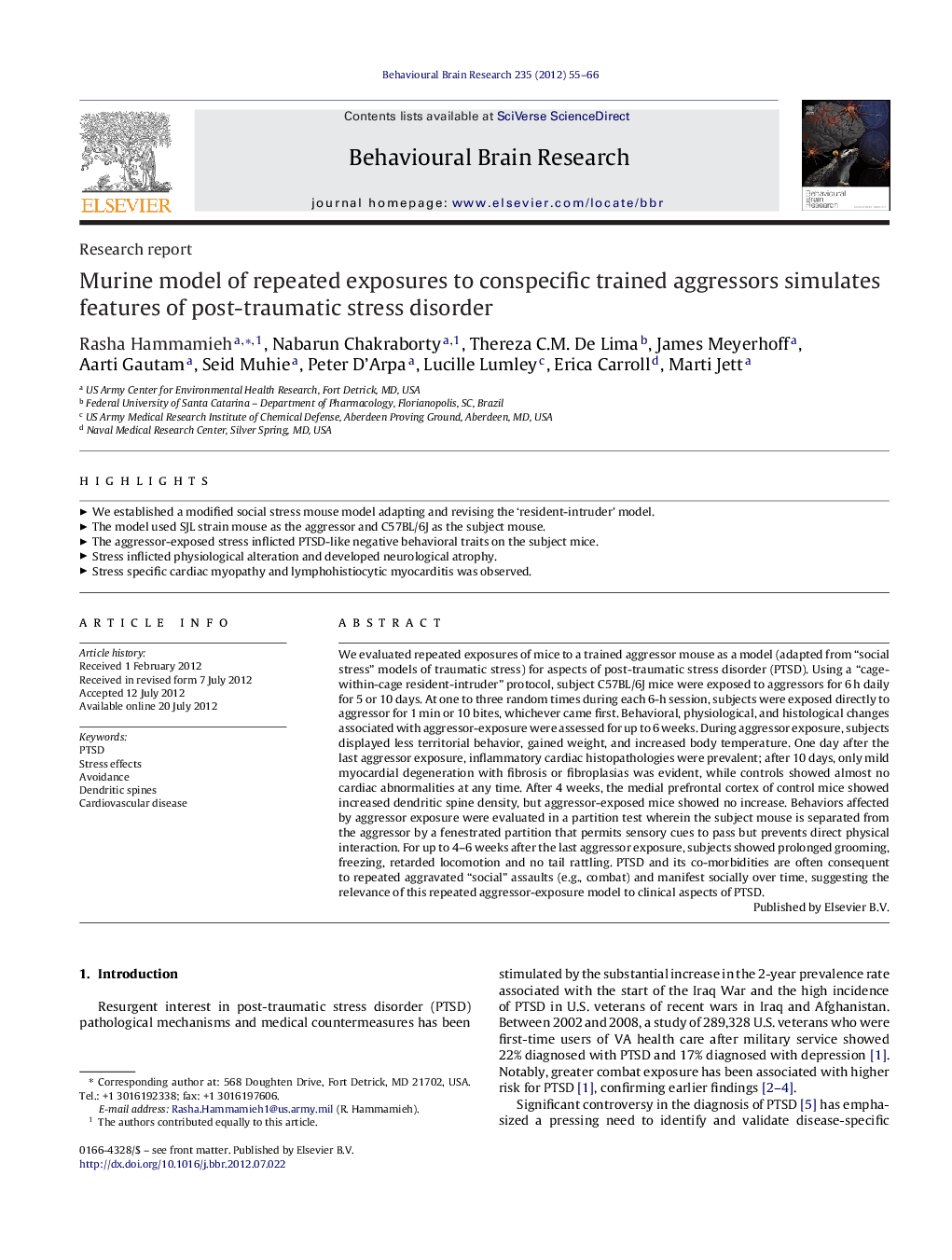| کد مقاله | کد نشریه | سال انتشار | مقاله انگلیسی | نسخه تمام متن |
|---|---|---|---|---|
| 4313051 | 1289982 | 2012 | 12 صفحه PDF | دانلود رایگان |

We evaluated repeated exposures of mice to a trained aggressor mouse as a model (adapted from “social stress” models of traumatic stress) for aspects of post-traumatic stress disorder (PTSD). Using a “cage-within-cage resident-intruder” protocol, subject C57BL/6J mice were exposed to aggressors for 6 h daily for 5 or 10 days. At one to three random times during each 6-h session, subjects were exposed directly to aggressor for 1 min or 10 bites, whichever came first. Behavioral, physiological, and histological changes associated with aggressor-exposure were assessed for up to 6 weeks. During aggressor exposure, subjects displayed less territorial behavior, gained weight, and increased body temperature. One day after the last aggressor exposure, inflammatory cardiac histopathologies were prevalent; after 10 days, only mild myocardial degeneration with fibrosis or fibroplasias was evident, while controls showed almost no cardiac abnormalities at any time. After 4 weeks, the medial prefrontal cortex of control mice showed increased dendritic spine density, but aggressor-exposed mice showed no increase. Behaviors affected by aggressor exposure were evaluated in a partition test wherein the subject mouse is separated from the aggressor by a fenestrated partition that permits sensory cues to pass but prevents direct physical interaction. For up to 4–6 weeks after the last aggressor exposure, subjects showed prolonged grooming, freezing, retarded locomotion and no tail rattling. PTSD and its co-morbidities are often consequent to repeated aggravated “social” assaults (e.g., combat) and manifest socially over time, suggesting the relevance of this repeated aggressor-exposure model to clinical aspects of PTSD.
► We established a modified social stress mouse model adapting and revising the ‘resident-intruder’ model.
► The model used SJL strain mouse as the aggressor and C57BL/6J as the subject mouse.
► The aggressor-exposed stress inflicted PTSD-like negative behavioral traits on the subject mice.
► Stress inflicted physiological alteration and developed neurological atrophy.
► Stress specific cardiac myopathy and lymphohistiocytic myocarditis was observed.
Journal: Behavioural Brain Research - Volume 235, Issue 1, 1 November 2012, Pages 55–66